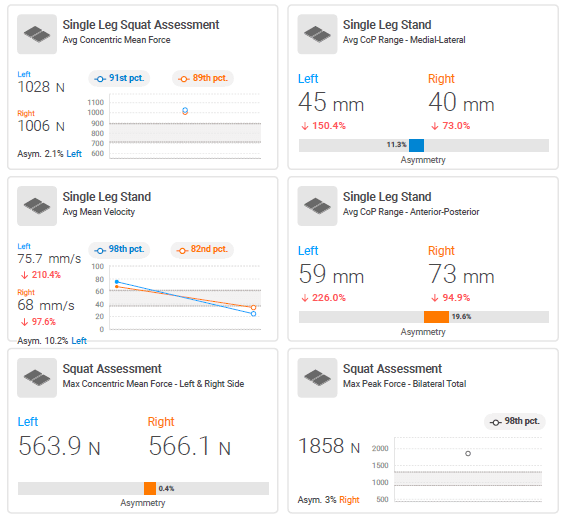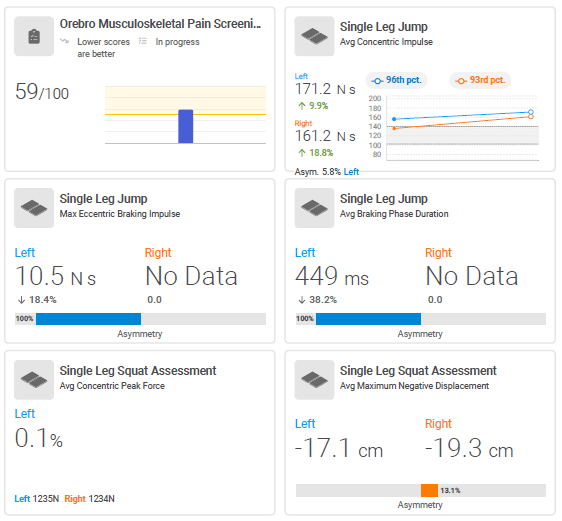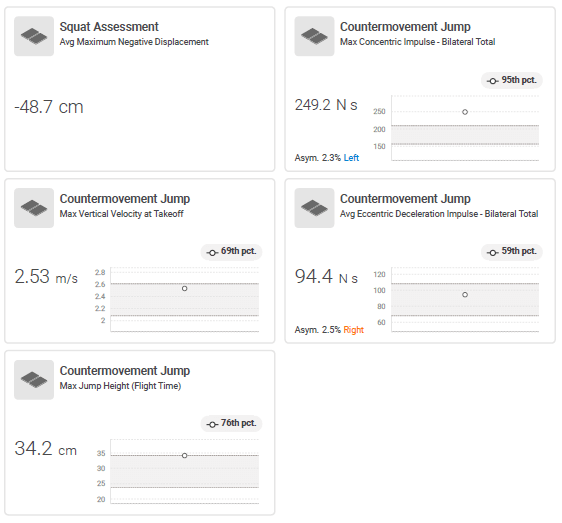Single leg balance testing.
This is an example of the force decks demonstrating some good progress with a male who wants to return to soccer and in general less pain.
Start of programming about 4 weeks prior. Significant asymmetry in single leg jump. I really like single leg jump compared to a Countermovement jump, and then I like single leg squat compared to bilateral squat as it showcases the force assymetries that exist.
My particular strategy is I look at the closest measure to what is measured by the force plate, which is force and time and base a lot of my data from this at the moment.

What I think the force decks are fantastic for, is that no matter the influence I have on someone, my opinion is just that. The force decks put numbers on my opinion. The change in this guy walking into the gym, the hopping, squatting, he can run without pain now. This is all good, but the force decks information made this bloke’s day. He looked at the data and he said that when he was doing the exercises, he did not think they felt like they were doing much. We did talk about the how, rather than how much in the initial discussion and that this might feel different to a “leg “ session in the gym as such.
Just the happiness on this bloke’s face knowing that he did the work and it did something objective is a good enough reason to utilise this in your testing and ongoing support for people in rehab.

This is also good justification for asymmetrical programming as well, which I use on the following ratios:
More than 20% I use 4 sets to 1 and for 15% or around I might go down to 3 sets to 1 and for less than 10 I am 2 to 1.
I only program in 3-4 week blocks maximum and in terms of progressives, this bloke was away for most of it, so I just emphasised to be consistent with the single sided rehabilitation work which he did most days. He only trained 4 times in the gym in this time though.

You really only need 2-3 tests to benchmark too, I tested a lot for this guy due to some of the issues I was seeing. I only retested the single leg jump and then the single leg squat on second session, with planned next time to retest some of the other measures.
Glenn Hansen – Head Coach
